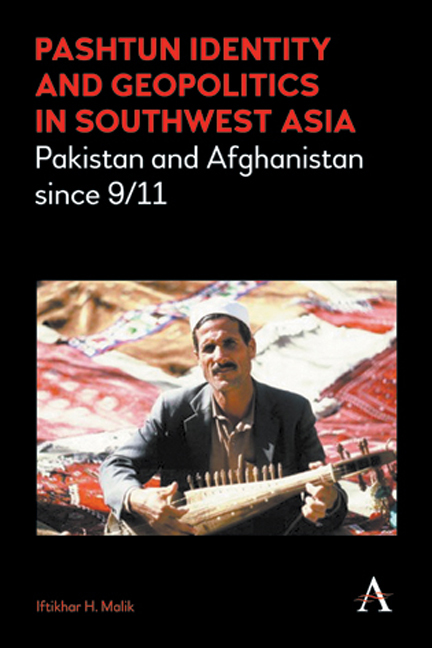Book contents
- Frontmatter
- Contents
- Preface
- Acronyms
- Glossary
- Maps
- Introduction
- Chapter One Gandhara Lands: Wrestling with Pashtun Identity and History
- Chapter Two Imperial Hubris: The Afghan Taliban in Ascendance
- Chapter Three Masculinities in Conflict: Western Pedagogy and the Return of the Afghan Taliban
- Chapter Four Understanding Pakistan: Geopolitical Legacies and Perspectives on Violence
- Chapter Five Understanding Civic Sentiments and Movements in Pakistan: Stalemated Cycle, or a Way Forward?
- Chapter Six The United States and Pakistan: Friends or Foes!
- Chapter Seven The European Union and Southwest Asia: Perceptions, Policies and Permutations
- Conclusion: Pashtun Troubled Lands, Uncertain Southwest Asia or a New Beginning!
- Notes
- Bibliography
- Index
Chapter One - Gandhara Lands: Wrestling with Pashtun Identity and History
Published online by Cambridge University Press: 22 July 2017
- Frontmatter
- Contents
- Preface
- Acronyms
- Glossary
- Maps
- Introduction
- Chapter One Gandhara Lands: Wrestling with Pashtun Identity and History
- Chapter Two Imperial Hubris: The Afghan Taliban in Ascendance
- Chapter Three Masculinities in Conflict: Western Pedagogy and the Return of the Afghan Taliban
- Chapter Four Understanding Pakistan: Geopolitical Legacies and Perspectives on Violence
- Chapter Five Understanding Civic Sentiments and Movements in Pakistan: Stalemated Cycle, or a Way Forward?
- Chapter Six The United States and Pakistan: Friends or Foes!
- Chapter Seven The European Union and Southwest Asia: Perceptions, Policies and Permutations
- Conclusion: Pashtun Troubled Lands, Uncertain Southwest Asia or a New Beginning!
- Notes
- Bibliography
- Index
Summary
‘The Afghans were known to be a “race of Tigers” who had already shown their teeth in 1838–42, a hard, warlike people toughed by a harsh, dry, mountainous country, passionately nursing their independence, family loyalty, courage, and a highly developed sense of personal honour and hospitality, but conversely regarded by unwelcome visitors as “robbers and cutthroats.”’
Rodney Atwood‘The most notable traits in their character are unbounded superstition, pride, cupidity and a most vengeful spirit […] They despise all other races […] They cannot deny the reputation they have acquired for faithlessness.’
Henry Bellew‘The Indian subcontinent – and the Frontier in particular – is littered with half-forgotten graveyards filled with the bones of unlucky lives extinguished before they had a chance to shine.’
Charles AllenGandhara, the ancient name of the upper Indus Valley – which makes up most of present- day Pakistan and Afghanistan – is the historic gateway to the subcontinent where cultures, creeds, communities and languages mingle, although not often without violence. Over the past two decades, we have witnessed here numerous trajectories of violence, owing to external and internal forces, which have claimed countless lives and resources of the Af-Pak region and beyond. The violence has often been nihilistic, and continues to be perpetrated and retribution carried out mainly by Pashtuns across the Durand Line in addition to its larger remit in these two countries. Without singling out Pashtuns as perpetually violence-prone tribes and as resistant to modern nation building, more recent and enduring developments such as the North Atlantic Treaty Organization's (NATO's) struggle against the Afghan Taliban and Pakistan military operations in Swat and the Federally Administered Tribal Areas (FATA) certainly necessitate a broad understanding of questions about Pashtun identity, highlighted in the later portion of this study.
In the Eye of the Storm
Following the torching of more than 400 girls’ schools, the closing down of numerous video and music shops and the public executions of men and women incriminated under all kinds of charges without any recourse to public review or accountability, Swat had by 2009 turned into a Taliban-controlled state within Pakistan.
- Type
- Chapter
- Information
- Pashtun Identity and Geopolitics in Southwest Asia , pp. 13 - 32Publisher: Anthem PressPrint publication year: 2016



